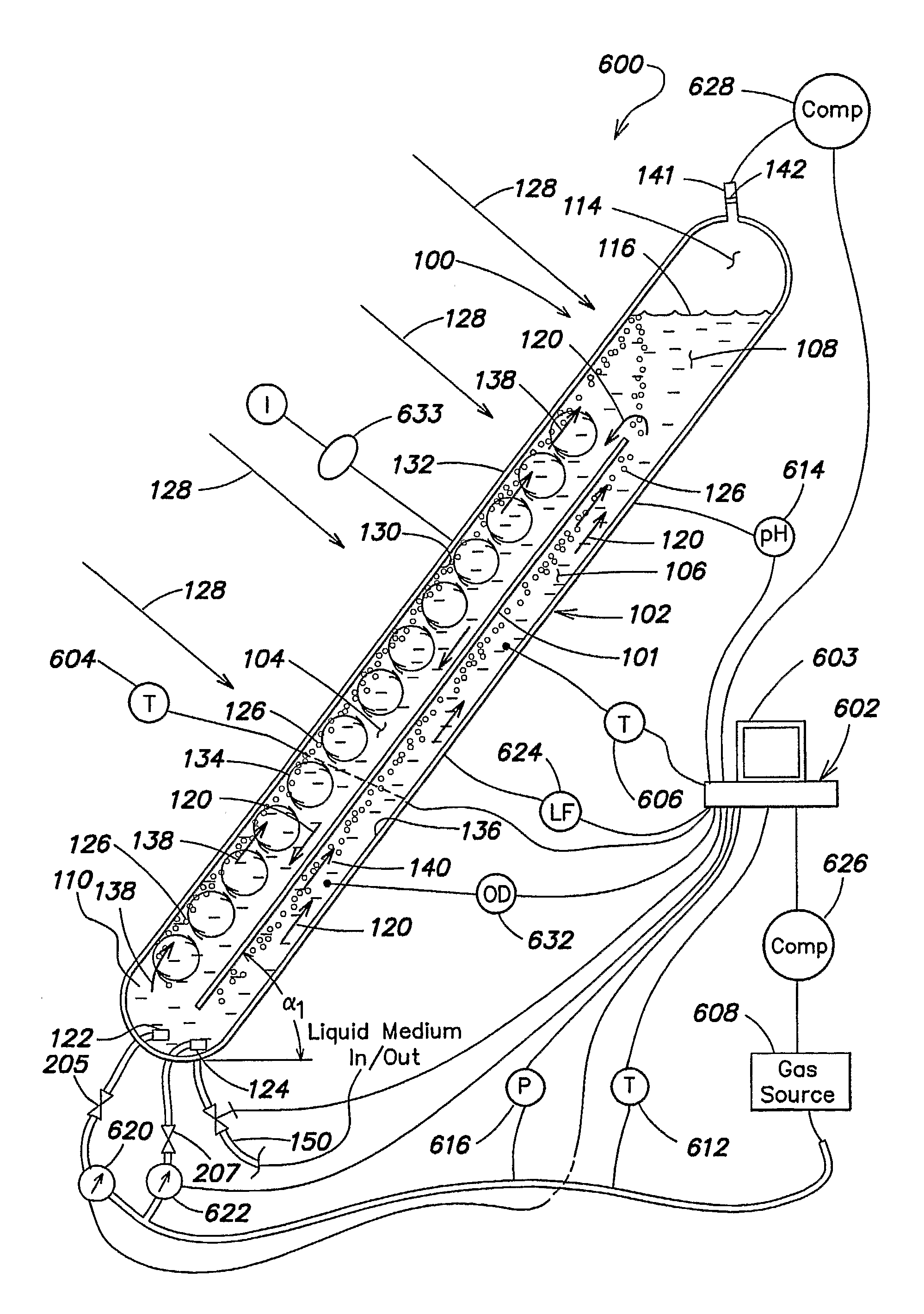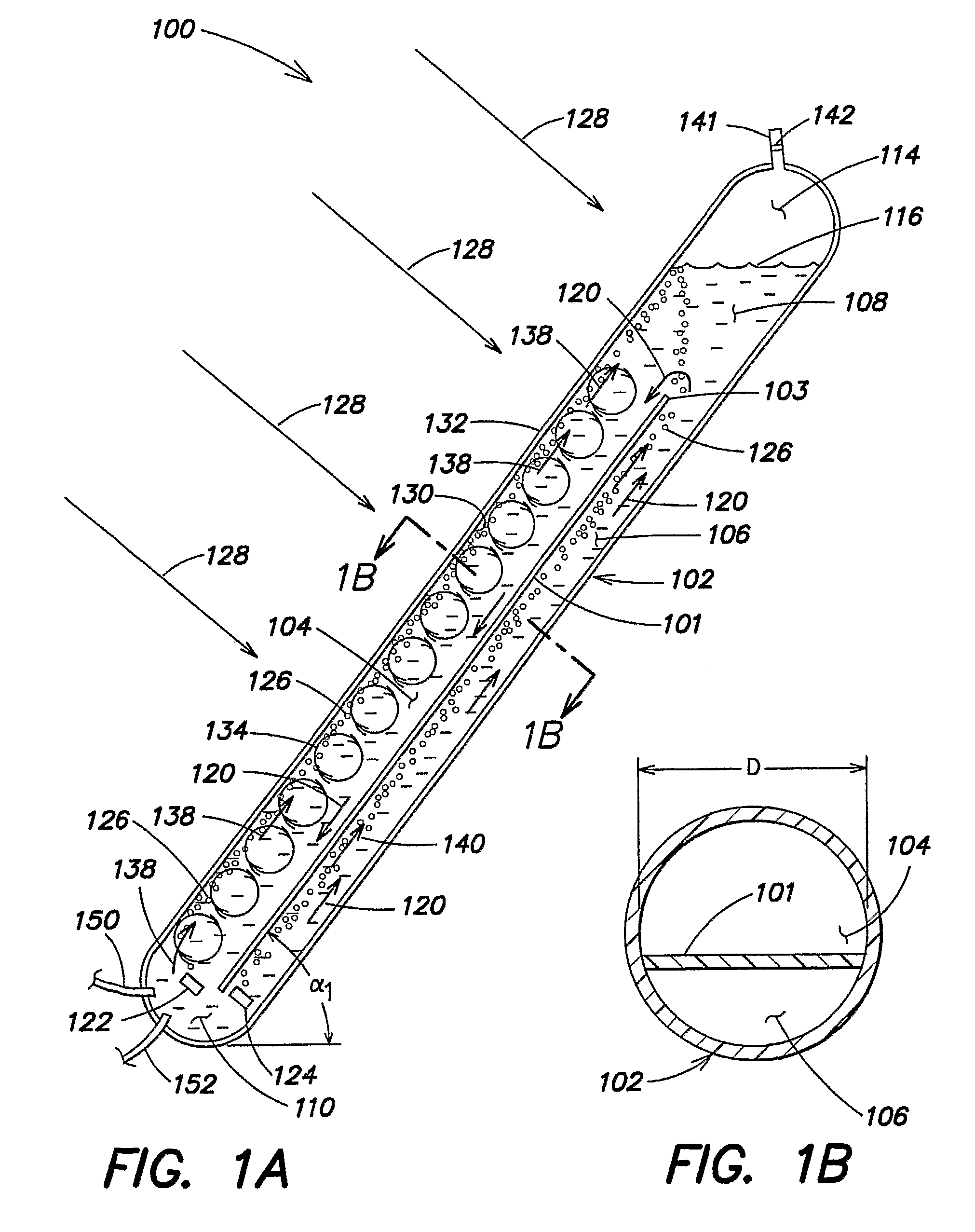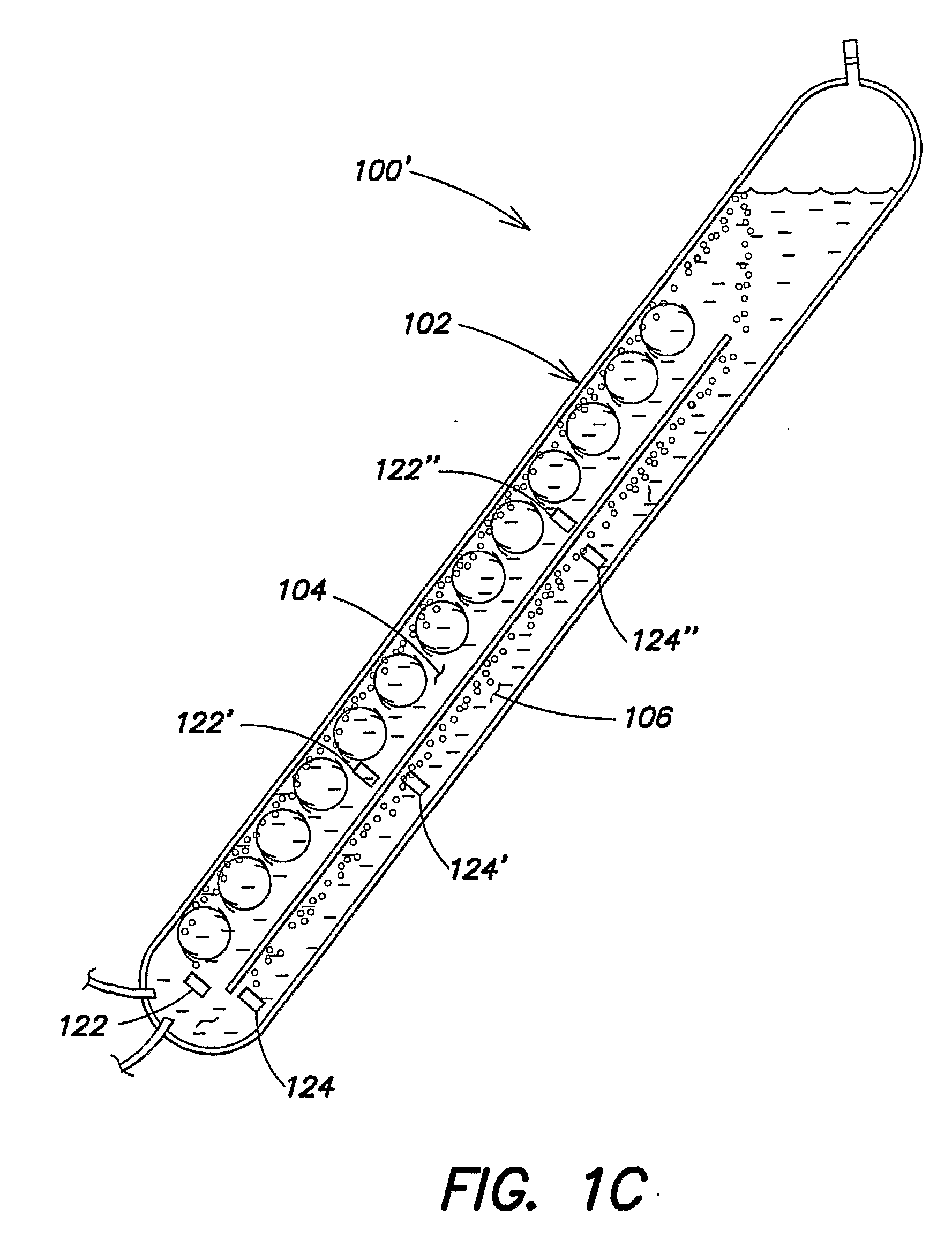Photobioreactor Cell Culture Systems, Methods for Preconditioning Photosynthetic Organisms, and Cultures of Photosynthetic Organisms Produced Thereby
a photobioreactor and cell culture technology, applied in the field of photobioreactor cell culture systems, methods for preconditioning photosynthetic organisms, and cultures of photosynthetic organisms produced thereby, can solve the problems of inability to achieve the rate-limiting step in the aqueous phase, and inability to achieve commercial success to date, so as to achieve the effect of reducing the growth ra
- Summary
- Abstract
- Description
- Claims
- Application Information
AI Technical Summary
Benefits of technology
Problems solved by technology
Method used
Image
Examples
example 1
Mitigation of CO2 and NOx and Algae Production in Inclined Split Tube Photobioreactor Systems and a Triangular Tubular Photobioreactor System
[0260]Four different photobioreactor systems were tested to investigate their algae production capabilities per photobioreactor footprint area. System 1 included an array of ten substantially triangular photobioreactors similar to those described in commonly owned PCT Publication No. WO 03 / 094598, incorporated herein by reference. System 1 included a solar panel conduits inclined at approximately 60 degrees relative to horizontal. Each conduit had an about 4 inch inner diameter and a length of about 9 feet 7 inches and the overall system had a working volume of approximately 900 liters. The reactors of system 1 had a total footprint area of about 1.435 m2. Each of systems 2-4 included a single conduit photobioreactor including a partition therein forming two channels, as described previously in the context of FIG. 1A, each conduit had a length ...
example 2
Mitigation of CO2 and NOx with a Three-Photobioreactor Module including Three Triangular Tubular Photobioreactors
[0265]Each photobioreactor unit of the module utilized for the present example comprised 3 tubes of essentially circular cross-section constructed from clear polycarbonate, assembled as shown in FIG. 1 of commonly owned PCT Publication No. WO 03 / 094598, with α1=about 45 degrees and α2=about 90 degrees. In this essentially triangular configuration, the vertical leg was about 2.2 m high and about 5 cm in inner diameter; the horizontal leg was about 1.5 m long and about 5 cm in inner diameter; and the hypotenuse was about 2.6 m long and about 10 cm in inner diameter. The photobioreactor module comprised 3 adjusted units arranged in parallel, similarly as illustrated in FIG. 2 of commonly owned PCT Publication No. WO 03 / 094598. This bioreactor module has a footprint of about 0.45 m2
[0266]A gas mixture (certified, AGA gas), mimicking flue gas composition was used (Hiroyasu et...
example 3
Mitigation of CO2 and NOx with a Photobioreactor Module including Thirty Triangular Tubular Photobioreactors
[0277]Each photobioreactor unit of the module utilized for the present example comprised 3 tubes of essentially circular cross-section constructed from clear polycarbonate, assembled as shown in FIG. 1 of commonly owned PCT Publication No. WO 03 / 094598, with α1=about 63 degrees and α2=90 degrees. In this essentially triangular configuration, the essentially vertical leg was 2.4 m high and 6.35 cm in diameter; the essentially horizontal leg was 1.22 m long and 5.08 cm in diameter; and the hypotenuse was 2.72 m long and 10.16 cm in diameter. The photobioreactor module comprised 30 adjusted units arranged in parallel, similarly as illustrated in FIG. 2 of commonly owned PCT Publication No. WO 03 / 094598. This bioreactor module has a footprint of about 3.72 m2
[0278]Gas input was via direct injection of flue gas from the Massachusetts Institute of Technology's (MIT's) Cogeneration ...
PUM
| Property | Measurement | Unit |
|---|---|---|
| Fraction | aaaaa | aaaaa |
| Time | aaaaa | aaaaa |
| Time | aaaaa | aaaaa |
Abstract
Description
Claims
Application Information
 Login to View More
Login to View More - R&D
- Intellectual Property
- Life Sciences
- Materials
- Tech Scout
- Unparalleled Data Quality
- Higher Quality Content
- 60% Fewer Hallucinations
Browse by: Latest US Patents, China's latest patents, Technical Efficacy Thesaurus, Application Domain, Technology Topic, Popular Technical Reports.
© 2025 PatSnap. All rights reserved.Legal|Privacy policy|Modern Slavery Act Transparency Statement|Sitemap|About US| Contact US: help@patsnap.com



